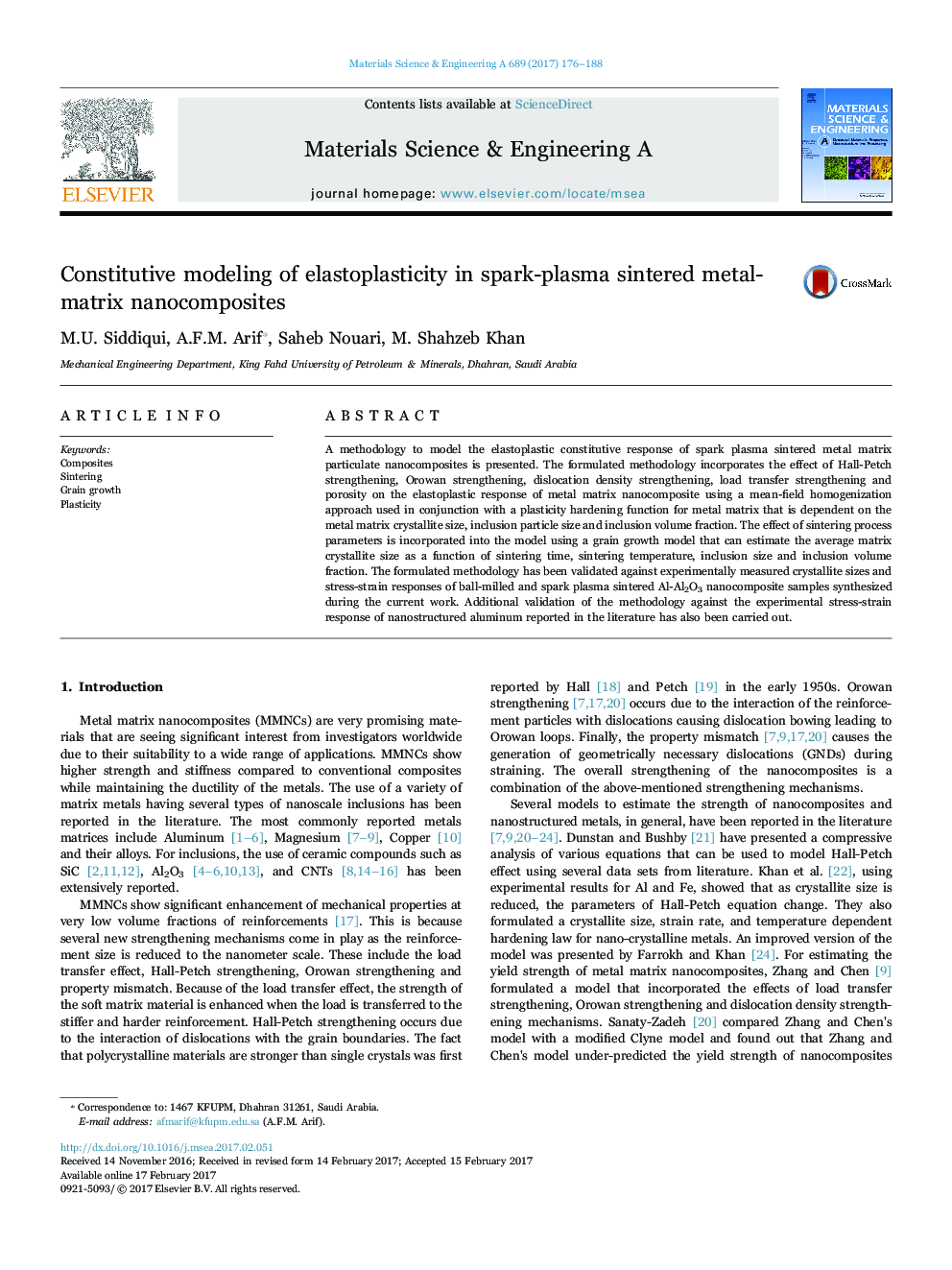| Article ID | Journal | Published Year | Pages | File Type |
|---|---|---|---|---|
| 5456501 | Materials Science and Engineering: A | 2017 | 13 Pages |
Abstract
A methodology to model the elastoplastic constitutive response of spark plasma sintered metal matrix particulate nanocomposites is presented. The formulated methodology incorporates the effect of Hall-Petch strengthening, Orowan strengthening, dislocation density strengthening, load transfer strengthening and porosity on the elastoplastic response of metal matrix nanocomposite using a mean-field homogenization approach used in conjunction with a plasticity hardening function for metal matrix that is dependent on the metal matrix crystallite size, inclusion particle size and inclusion volume fraction. The effect of sintering process parameters is incorporated into the model using a grain growth model that can estimate the average matrix crystallite size as a function of sintering time, sintering temperature, inclusion size and inclusion volume fraction. The formulated methodology has been validated against experimentally measured crystallite sizes and stress-strain responses of ball-milled and spark plasma sintered Al-Al2O3 nanocomposite samples synthesized during the current work. Additional validation of the methodology against the experimental stress-strain response of nanostructured aluminum reported in the literature has also been carried out.
Related Topics
Physical Sciences and Engineering
Materials Science
Materials Science (General)
Authors
M.U. Siddiqui, A.F.M. Arif, Saheb Nouari, M. Shahzeb Khan,
